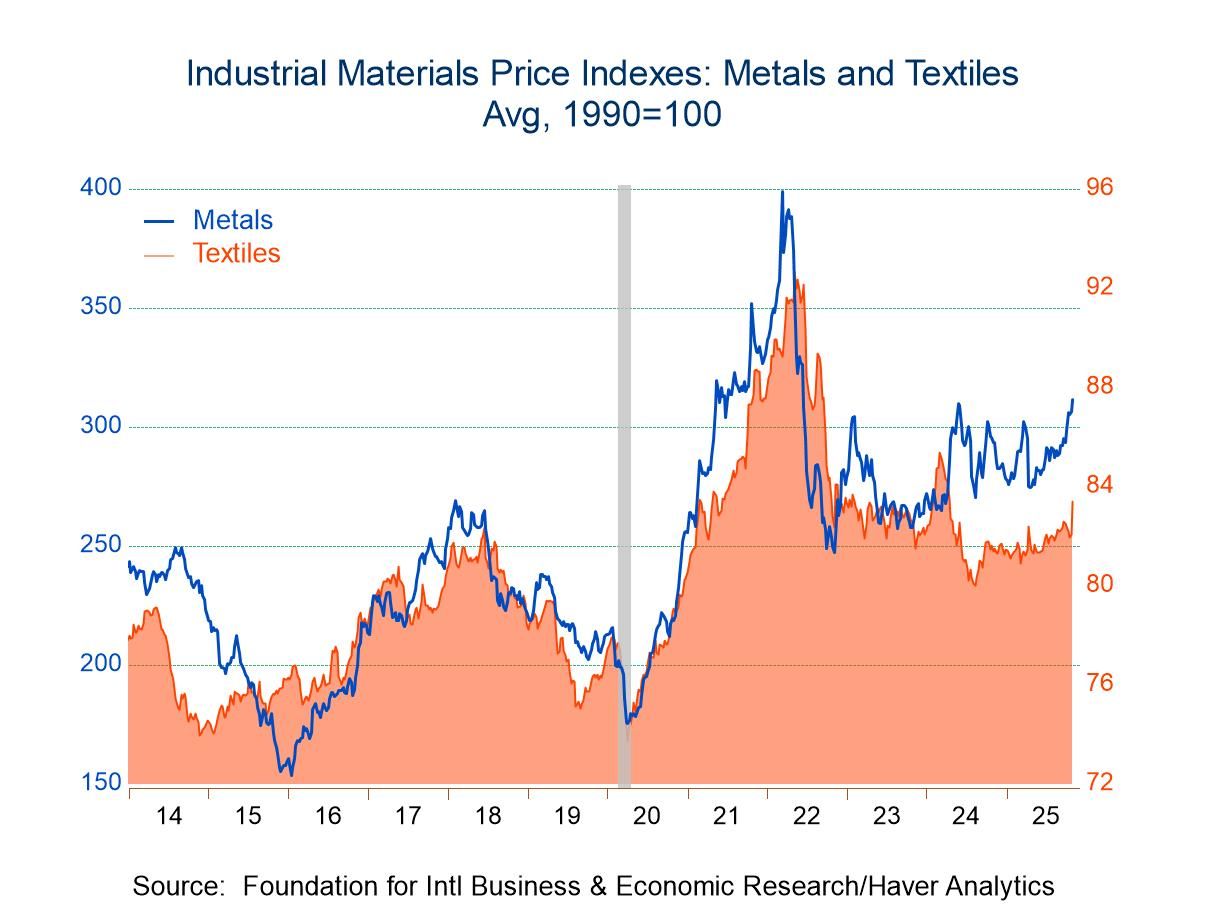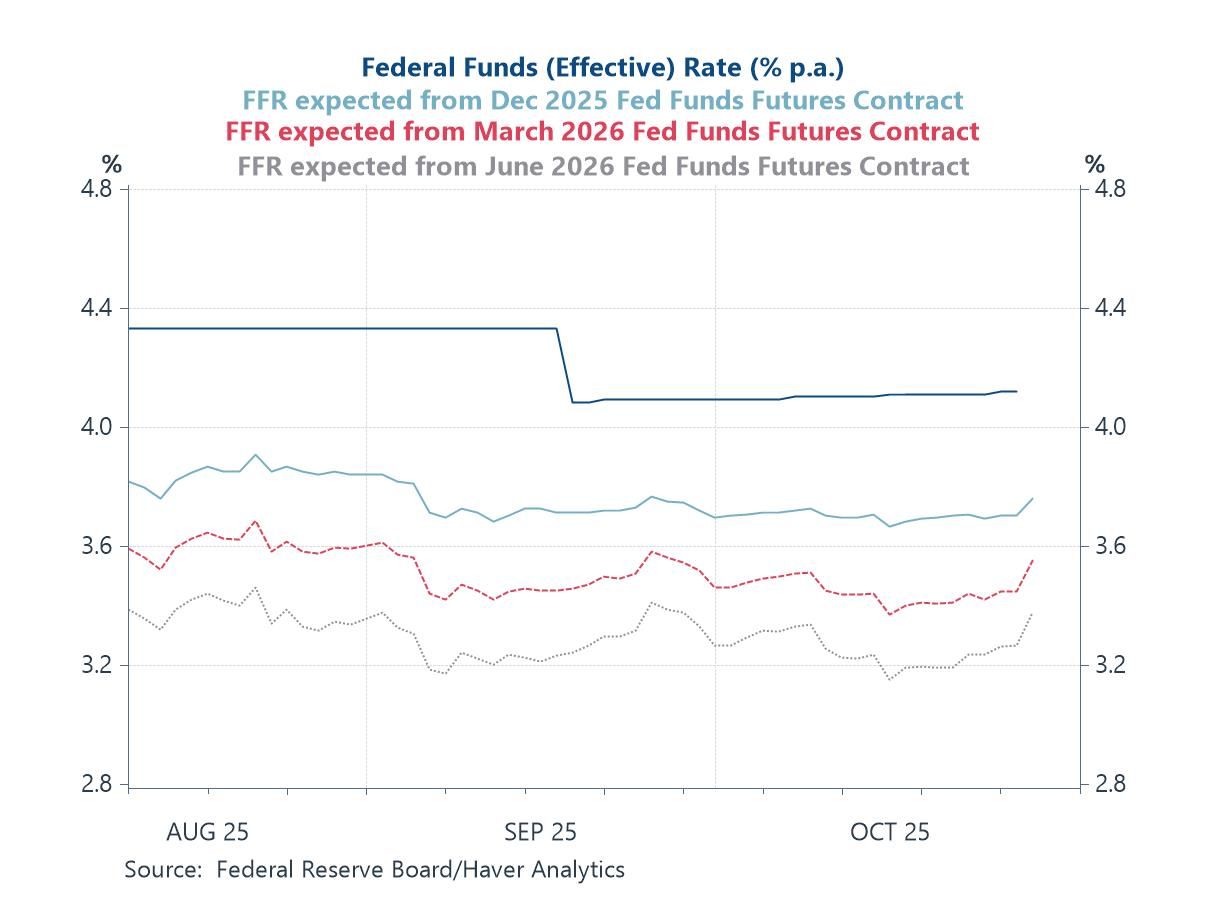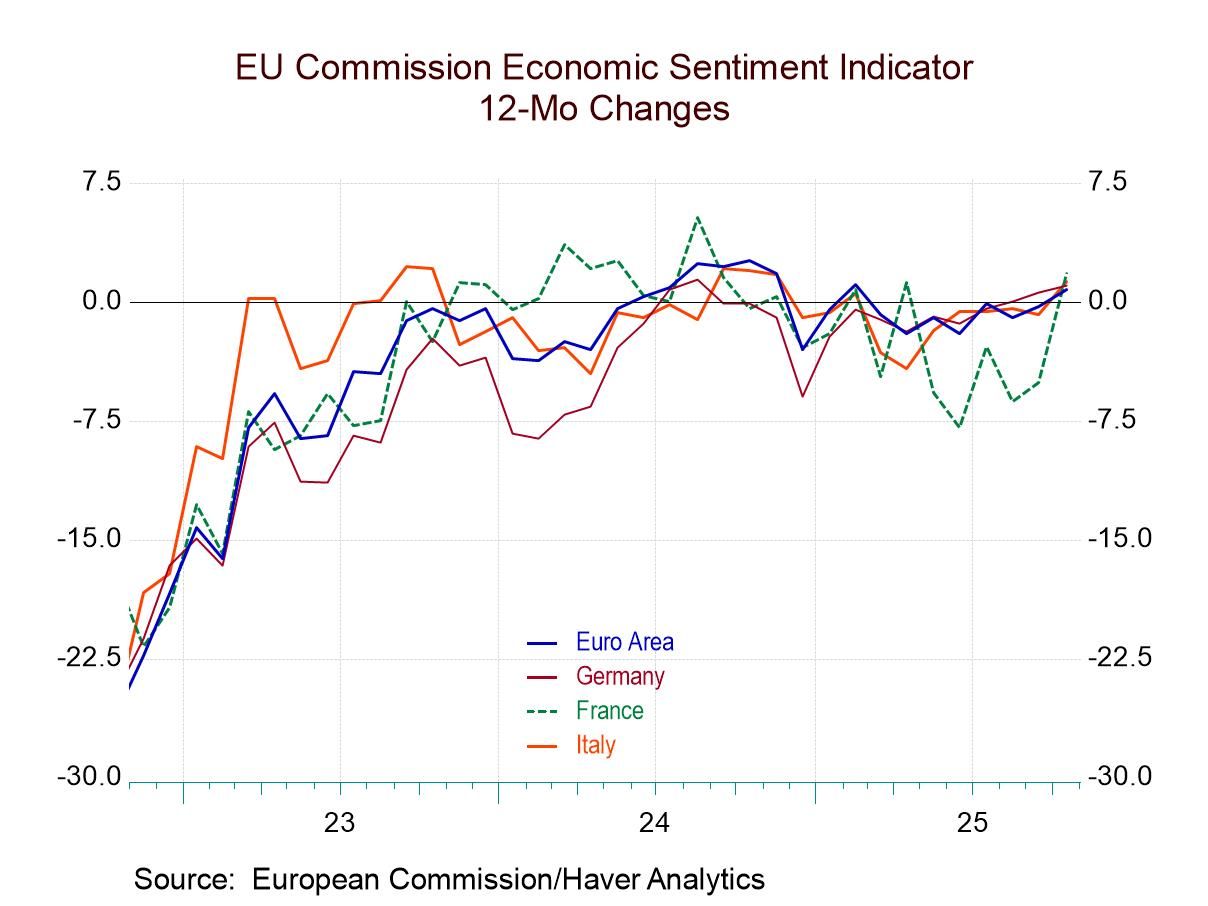 Global| Feb 02 2006
Global| Feb 02 2006European Construction Activity Picks Up Some Steam
Summary
Low interest rates tend to help construction, and this has been the case in Europe recently.Eurostat this morning reported construction orders through Q3 2005 for the region as a whole and for selected countries through November. [...]
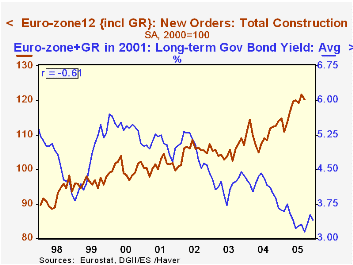
Low interest rates tend to help construction, and this has been the case in Europe recently.Eurostat this morning reported construction orders through Q3 2005 for the region as a whole and for selected countries through November. Specific performance varies by country, but the renewal of this sector for the area as a whole is impressive. These orders cover contracts for nonresidential projects, including buildings and infrastructure.
Construction orders for the entire Euro-Zone 12 actually eased 1.1% in September from August, but the level over the last few months was running about 10% above 2004 amounts.Spain is a good example of the strength, with September's value almost 18% higher than a year ago. The UK, a member of the European Union ("EU-25"), but not the Euro-Zone, is also seeing a strong advance, with November's index 123.0 (2000=100) up 14% from November 2004.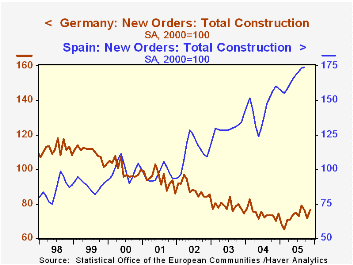
Germany looks to be a special case here. Its construction sector has long been in decline, basically for more than 10 years. But the last several months have seen a stabilization and some modest gains. The upturn is not steep, but for that reason, perhaps it can last a good while. Both buildings and infrastructure construction are participating, although the latter is more uneven.
Among the entire Euro-Zone, the index for buildings was 122.66 in September, up 10.1% from the year-earlier month; it averaged 122.08 in Q3, up 11.9%. Civil engineering orders were 116.49 in September, just 2.8% above September 2004, but they are more irregular than smaller project orders; the quarterly average was 117.82, up 5.0% on the year. As seen in the first graph, these orders all together have a 61% negative correlation with long-term interest rates. These latter, though, have been rising for the last few months. Will that constrain the vigor of this building activity? Possibly, but the rate increase is quite modest and the level remains near the lowest for the history of this average of European yields since 1990.
| EU-12 & Select Countries, 2000=100 | Nov 2005 | Oct 2005 | Sept 2005 | Aug 2005 | 2004 | 2003 | 2002 |
|---|---|---|---|---|---|---|---|
| Euro-Zone 12 | -- | -- | 120.27 | 121.66 | 110.26 | 105.29 | 105.42 |
| Germany | 76.54 | 71.86 | 76.10 | 78.99 | 74.54 | 78.46 | 88.46 |
| Spain | -- | -- | 173.89 | 173.43 | 145.16 | 130.21 | 113.29 |
| UK | 123.00 | 124.50 | 110.80 | 117.90 | 104.81 | 97.80 | 102.51 |
Carol Stone, CBE
AuthorMore in Author Profile »Carol Stone, CBE came to Haver Analytics in 2003 following more than 35 years as a financial market economist at major Wall Street financial institutions, most especially Merrill Lynch and Nomura Securities. She had broad experience in analysis and forecasting of flow-of-funds accounts, the federal budget and Federal Reserve operations. At Nomura Securities, among other duties, she developed various indicator forecasting tools and edited a daily global publication produced in London and New York for readers in Tokyo. At Haver Analytics, Carol was a member of the Research Department, aiding database managers with research and documentation efforts, as well as posting commentary on select economic reports. In addition, she conducted Ways-of-the-World, a blog on economic issues for an Episcopal-Church-affiliated website, The Geranium Farm. During her career, Carol served as an officer of the Money Marketeers and the Downtown Economists Club. She had a PhD from NYU's Stern School of Business. She lived in Brooklyn, New York, and had a weekend home on Long Island.


